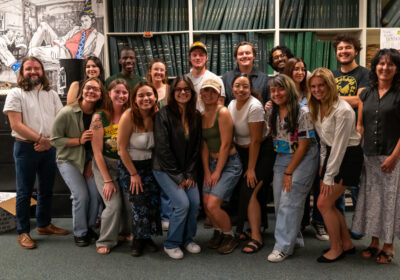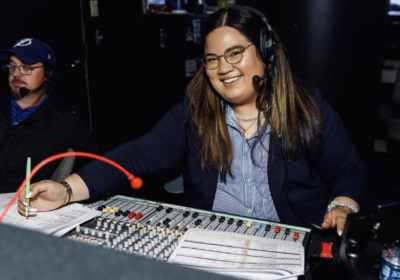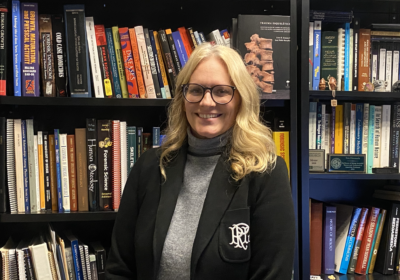Combatting bullying with movement
Rampant efforts to stop bullying include charities, funds and various walks in honor of those who were bullied to death.
But a video — now posted on Youtube by the USF College of The Arts — has reached various continents and garnered accolades for assistant professor of dance Andrew Carroll and a group of USF students.
It began with an instrumental dance video he created about hospital cleanliness by the Florida Department of Health in 2010 that opened Carroll’s eyes to the power of the arts.
Because much of the hospital staff did not speak English, Carroll had to ensure that the movements and explanations in the video on proper cleaning methods could be clearly understood without words.
The following year, Carroll saw his video used across the country and he was later commissioned to make two subsequent films — one in 2011 about nursing homes and another in 2012 about nursing initiatives.
“Looking at it, I realized what a great medium this was to kind of illustrate things educationally that was a fun way to do it rather than audiences getting a pamphlet or something written,” Carroll said. “Audiences would much rather see a video and see the things that the arts have the capability to express something that words fail to express.”
After the undeniable success of the first three commissioned videos, Carroll wanted to reach the teenaged and young adult demographic with an important issue — bullying.
His goal was simple.
Carroll wanted to attack social issues in a way that he had never seen before. By way of choreography, he wanted to put a dent in the bullying plague that many students have experienced.
In his recruiting process, Carroll said he looked for people who would properly look and play the part.
After researching bullying trends and statistics, Carroll gathered a group of culturally diverse students in order to stay true to the facts about bullying.
“I tried to incorporate the idea that anybody can be a bully,“ he said. “Therefore I tried to represent as many diverse backgrounds as I could within the group to show that it’s not just one group or another. With any choreographer, your best bet is to find things that feel natural and that the dancers themselves can do.”
International cellist Zoe Keating and vibraphonist Michael Ortega also signed on to have their music featured in the film.
Through in-studio experimentation and exploration of personal creativity, Carroll and his students searched for unique ways to exhibit various types of dominance and aggression.
“It was clear from the start that I didn’t want any kind of actual pushing, hitting or physical violence, “ he said. “I was just trying to imply through movement the sense that somebody was trying to bully somebody.”
The seven-minute video took place on the USF campus, with the prepared premise laid out across storyboards.
The concept of cyber-bullying morphed into artistic and powerful movements, giving wordless insight to viewers who, within six months of the video’s release, would span across the globe and includes various anti-bullying agencies and bullying prevention organizations.
In a letter from Pacer’s National Bullying Prevention Center in Minnesota, Carroll’s video receives praise from one of the leading bully prevention organizations.
“I must tell you, your dance video is one of the most amazing contributions we have seen!” the letter said.
“With your permission, we would like to use it on our primary website. In addition, we would like to explore the possibility of using it in our school curriculum as part of a bullying prevention toolkit.”
With numerous accolades for using his creativity to do good in the world, much of Carroll’s pride comes from the simple core of why the video was made.
“I’m really pleased it has the capacity to do some good,” Carroll said. “If it has the benefit to stop one person from doing this, then that would make me, and I think it would make anybody, really happy.”
His next video will tackle domestic violence in a similar manner, which he hopes to wrap up by the end of this summer.
“It’s a lot of work, but it’s a really interesting project,” Carroll said. “It’s just so worth it.”







